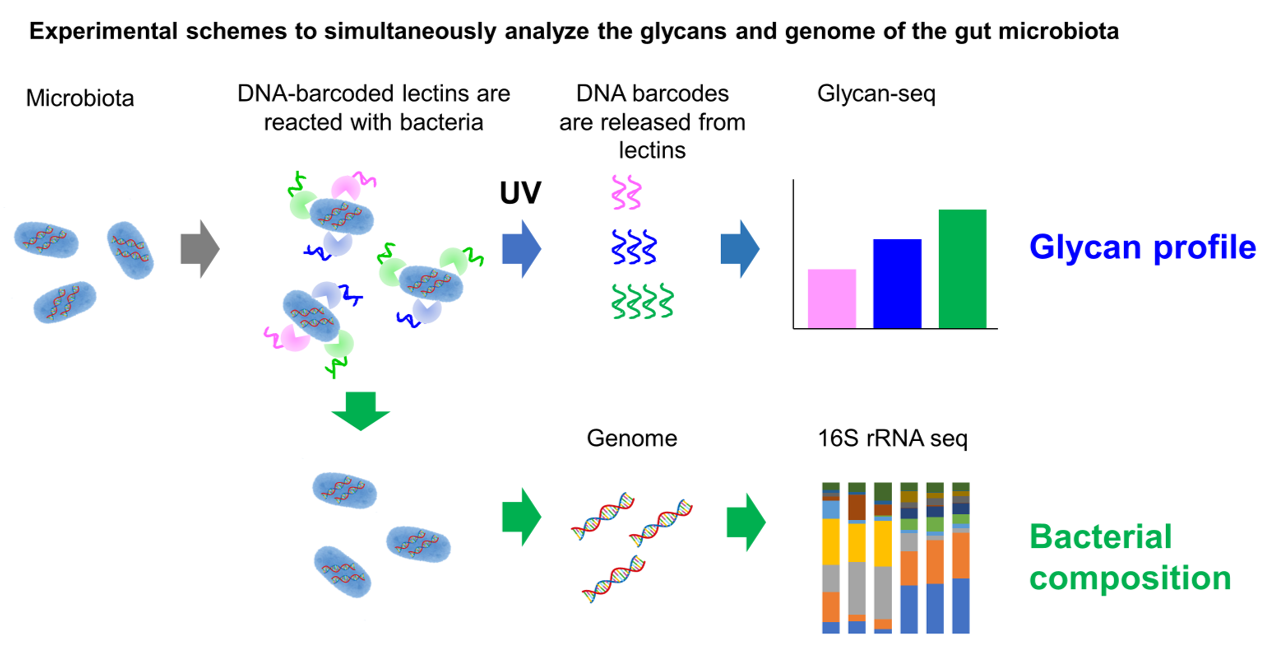Glycan profiling of the gut microbiota by Glycan-seq
The gut microbiota plays an important role in the development of health and disease. Glycans on the surface of microorganisms are key molecules for crosstalk with the host, and are thought to be closely related to symbiosis, tolerance, and exclusion of microorganisms. However, until now, there has been no technology to comprehensively analyze glycans of the gut microbiota . Recently, Multicellular System Regulation Research Group succeeded in developing a Glycan-seq method for highly sensitive profiling of cell surface glycans by using DNA barcode-labeled lectins and next-generation sequencers (https://www.aist.go.jp/aist_j/press_release/pr2021/pr20210727/pr20210727.html).
In this study, Lalhaba Oinam (Post-doc), Fumi Minoshima (Technical staff at that time), and Hiroaki Tateno (Group leader) at Multicellular System Regulation Research Group Multicellular System Regulation Research Group developed a technique for profiling the glycans of the gut microbiota using the Glycan-seq method. Using this technology, we performed glycan profiling of fecal-derived microbiota of pups and adult mice. We found that the glycan profiles of pups and adult mice were different. The α2-6 sialic acid-binding lectin showed high reactivity to the microbiota from pups. By lectin pull-down and 16S rRNA sequencing, we found that bacteria such as Lactobacillaceae, Lachnospiraceae, Enterobacteriaceae, and Muribaculaceae were modified with α2-6 sialic acid. It was suggested that microbial glycans are closely related to microbial symbiosis and exclusion. Microbial glycans may have a close relationship with microbial colonization and symbiosis. In the future, we plan to apply microbial glycans to the selection and removal of target microorganisms.
This study was supported by AMED-PRIME.
Glycan profiling of the gut microbiota by Glycan-seq

Publication
- Title: Glycan profiling of the gut microbiota by Glycan-seq
- Authors: Lalhaba Oinam, Fumi Minoshima and Hiroaki Tateno
- Journal: ISME Communications 2022 Jan 5.
- DOI: 10.1038/s43705-021-00084-2